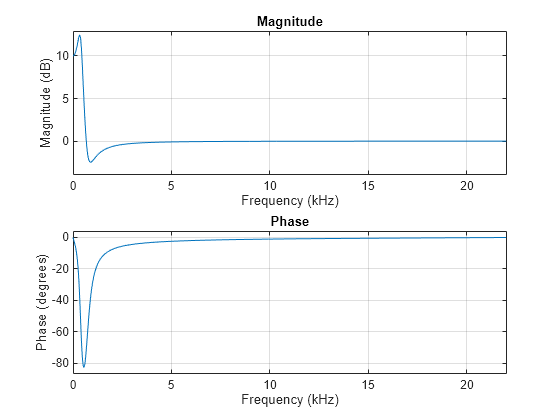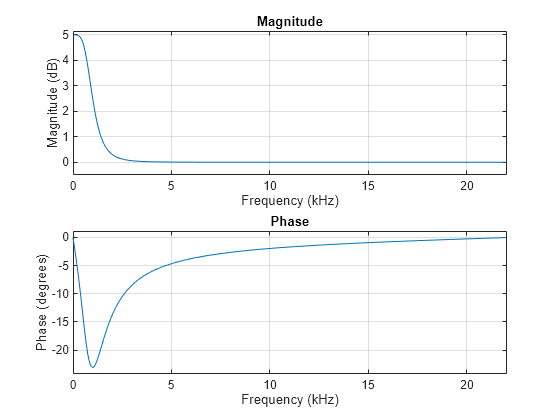designShelvingEQ
Design shelving equalizer
Syntax
Description
Examples
Input Arguments
Output Arguments
References
[1] Bristow-Johnson, Robert. "Cookbook Formulae for Audio EQ Biquad Filter Coefficients." Accessed September 13, 2021. https://webaudio.github.io/Audio-EQ-Cookbook/Audio-EQ-Cookbook.txt.





